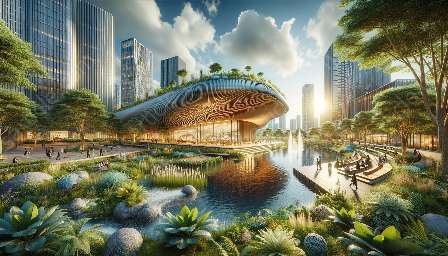With the rising need for sustainable solutions, 3D printing technology has emerged as a game-changer in the field of architecture and design. This article delves into the synergy between 3D printing and sustainability in architecture, highlighting its compatibility with green design principles and its innovative applications.
The Rise of 3D Printing in Architecture
3D printing, also known as additive manufacturing, has gained momentum in the architecture and construction industries due to its ability to create complex geometries and structures with reduced material waste. The technology allows architects and designers to produce intricate models and prototypes with precision and efficiency, revolutionizing traditional construction practices.
Alignment with Green Design Principles
3D printing aligns seamlessly with green design principles by minimizing material usage and reducing waste during the construction process. Its additive nature enables architects to optimize resource utilization and create sustainable structures with minimal environmental impact. Additionally, 3D printing promotes energy efficiency by utilizing advanced materials and innovative construction techniques.
Sustainable Materials and Processes
One of the key aspects of 3D printing in architecture is the utilization of sustainable materials, such as recycled plastics, biodegradable polymers, and eco-friendly composites. These materials not only contribute to the circular economy but also offer high performance and durability, making them ideal for sustainable construction projects. Furthermore, the additive manufacturing process itself is energy-efficient and reduces carbon emissions compared to traditional manufacturing methods.
Innovative Applications
3D printing enables architects to explore new design possibilities by creating customized and parametric structures that optimize material usage and enhance structural integrity. The technology empowers designers to generate organic forms, biomimetic designs, and lightweight structures that prioritize sustainability without compromising aesthetics. Additionally, 3D printing allows for on-site fabrication, minimizing transportation costs and carbon footprint associated with conventional building materials.
Case Studies and Success Stories
Several architectural firms and construction companies have demonstrated the potential of 3D printing in sustainable architecture through groundbreaking projects. From low-cost housing solutions to durable infrastructure components, 3D printing has been leveraged to address social, economic, and environmental challenges while promoting sustainable development. These success stories serve as inspiring examples of how 3D printing can contribute to a greener and more sustainable built environment.
Future Outlook
The evolution of 3D printing technology continues to inspire visionary architects and designers to create innovative, sustainable, and resilient structures. As the industry embraces sustainable practices and green design strategies, 3D printing is poised to play a pivotal role in shaping the future of architecture, contributing to environmentally conscious urban development and sustainable building solutions.

